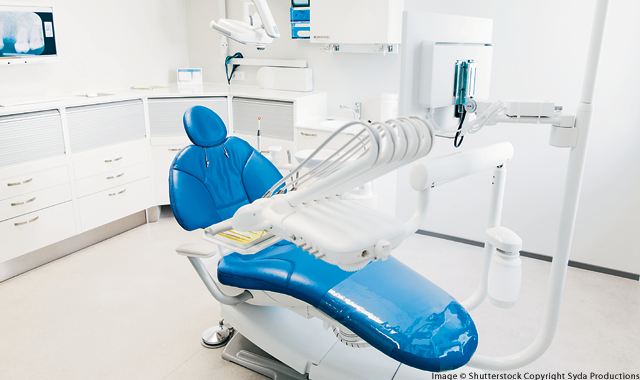The best way to pay for practice upgrades
Improving your dental practice is pricey, so it's important to consider the payment option that works for you.

Dental financial advisors give many opinions about the best way to pay for an upgrade to the dental office.
Some dental CPAs suggest that the dentist use as much of his or her own cash flow and borrow as little as possible. Others suggest borrowing as much as available so that “other people’s money,” is used for the expansion.
There are a number of ways to borrow. The longest term of a loan with a reasonable rate of interest is an acceptable method. Others include borrowing on the shortest term possible and paying off the balance as quickly as it can be done.
Related article: 5 ways your office design can help (or hurt) your bottom line
Let’s take a look at some of these methods and see what they mean from a cash flow, tax and economic view and how the selection of choice creates different results for the dentist.
Using office cash flow and borrowing the least amount possible
This choice leaves little money available for any type of unusual occurrence in the office or by the dentist individually. It will probably take much longer to complete the upgrade than other methods, as the cash flow from the office has peaks and valleys - as dentists all know.
It may be difficult to engage a contractor as well because of the long-term payout probably necessary for completion. Often, this results in irritation and grumbling with staff, though hopefully not with patients.
An advantage to the dentist is that no borrowing costs are incurred. Another consideration is the tax benefit created upon the completion of the upgrade.
Borrowing as much as possible
Another method of paying for the expansion of the dental office is to borrow as much as possible and to use the lender’s money for the expansion.
The first thing to be aware of is that this will result in interest charged by the bank. However, it will also allow the dentist to go on with his or her practice with few interruptions in the flow of money to the office.
The interest to the office is tax deductible and the expected completion date should be on target with the builder’s agreement. The contractor now has a constant flow of funds and can devote his or her crew to the completion of the work on a timely basis so the next job can be scheduled. With the on-time completion, the tax benefit for the year in question can be more accurately projected by the dental CPA.

The longer term of the loan allows the dentist to preserve as much cash flow as possible, since the monthly payment on the loan will be less than shorter payment schedules. It also allows the dentist to accumulate enough cash to pay the tax as the principal is paid, since all debt payment is considered taxable. If the deduction has expired and the debt is paid, there is a tax due on the remaining debt as it is paid.
The worst problem is if the dentist is concerned about cash flow and has no money to pay the tax. The longer-term loan offers the advantage of having the money to pay the tax since the debt reduction at the slower schedule will allow the funds to accumulate to avoid that from occurring.
Borrowing as little as possible
As with the longer-term loan, the shorter time negotiated with a lender to borrow the construction loan is another option whereby the dentist’s own money is not used.
This approach allows for a lesser amount of cash flow interruption to the dental office. It allows finality with the completion date of the agreement with the contractor. It also reduces the interest cost to the dentist and permits the tax deduction projection for the dental CPA to be more accurate based on the timing with the builder.
Related article: How better dental office design can prolong your career
Some dentists like this method since the interest cost is reduced and they are not using their own money. At times, the deductions for tax purposes and the payoff of the loan clash. As the loan is paid and deductions are taken, there may be a loss of deduction compared to the loan balance and there is a tax to pay with fewer funds available. The explanation for this is that every time the loan is amortized, that payoff is taxable. Without the deduction left to set off against the debt payment, a tax would be due with fewer funds left to pay it because of the faster debt payoff from the dentist’s working capital.